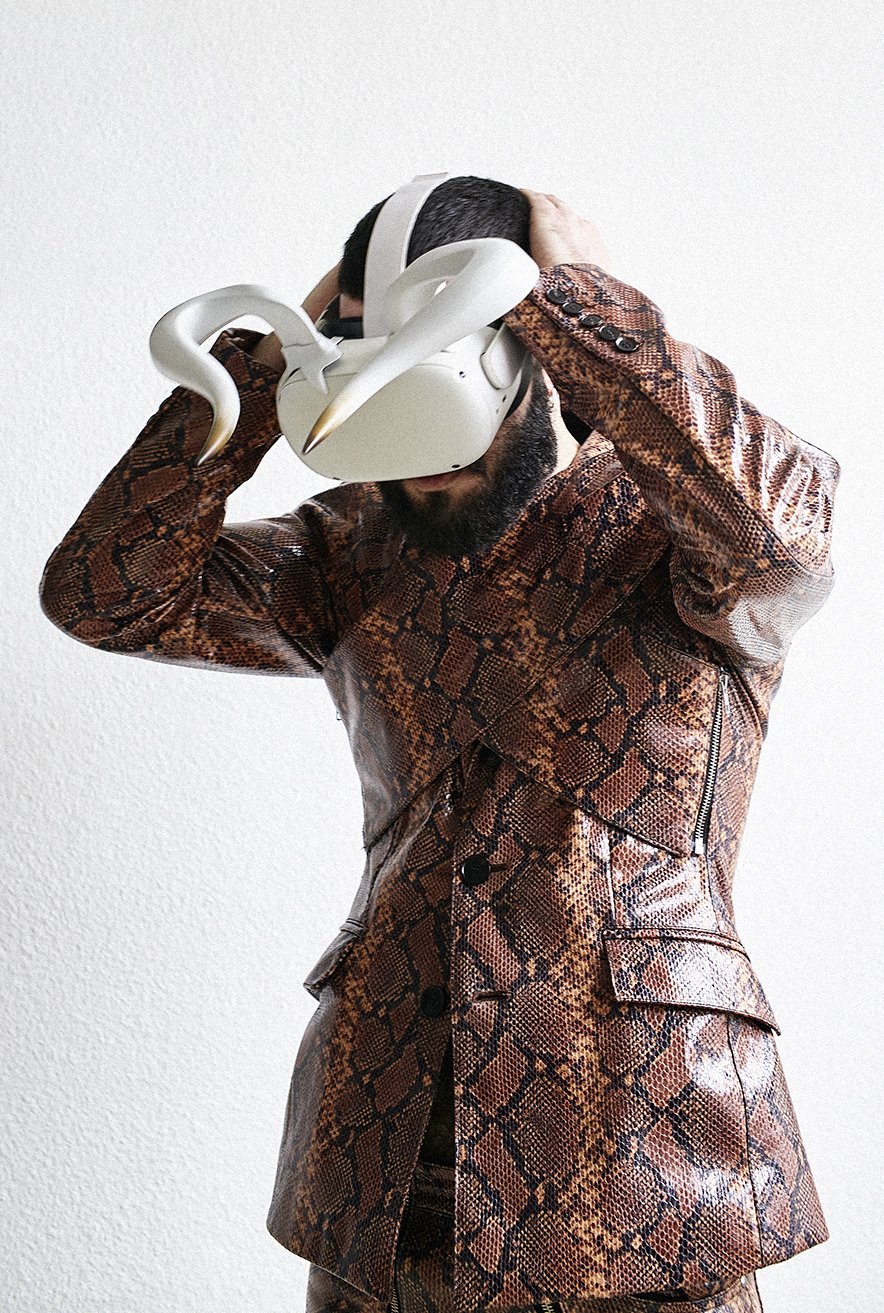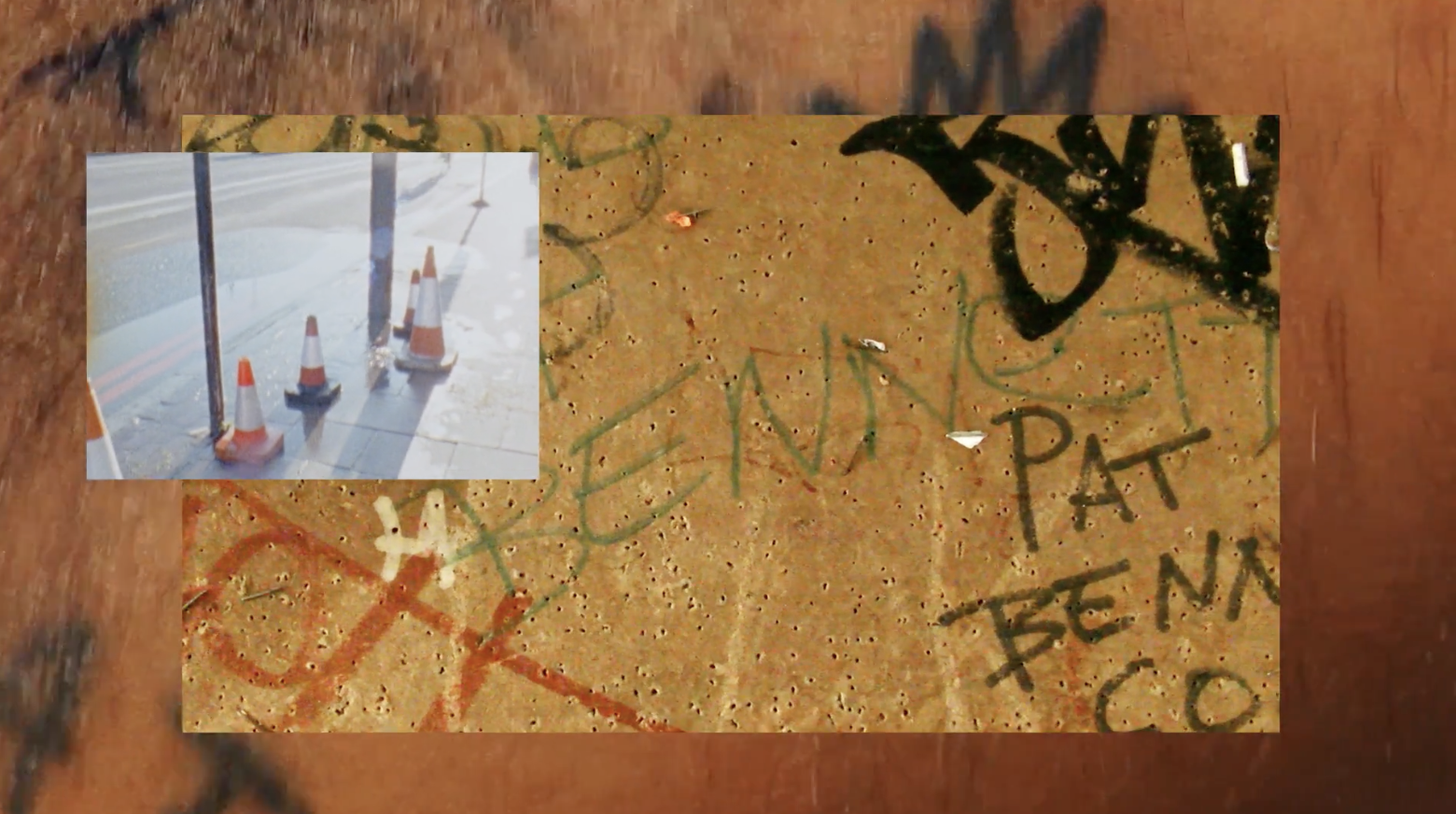interview by Rachel Adams
RACHEL ADAMS: When I think about your work, I often see objects that provide assistance. Slumpies help your body adjust to the onslaught of technological devices, sculptures that become flotation devices, and the works in our show TIMESHARE were prototypes for living in a future where you couldn’t go outside–a fountain that doubles as a hydroponic garden, blueprints for life underground, etc. How do you see this new glasswork fitting into the idea of assistance?
JILLIAN MAYER: I have always loved the appeal of any object that does more than one thing. Whether it be a mop that can convert to a broom, a reversible clothing item, or anything else that fits into the “Well that’s not all…” rhetoric. I love to think of these items as suggestive and simultaneously insecure and self-aware of their limit if they could only be one thing … that objects have to try to justify their existence as well as place amongst your other objects. Along with pressure for us to perform many tasks, our items are not excused from this weight. There is only so much room in our lives so these objects plead the case for their acceptance.
Much of my work has been interlaced with various roles and tasks; often a conceptual rooting with some type of design element that provides a type of function (ex: the Slumpie sculptures that support one’s physical body while journeying online). By interlaying the artworks with a performative element, it helps me justify adding something to this very full world. Also, the tasks that my work usually performs will face an eventual obsolescence. Then, the works can just be art and no longer have a job they will have to perform. Planned obsolescence is key to moreness.
Also, it makes me think about a project I made in collaboration with the Miami Airport called STILL LIFE SCANS. I used the security machines as an art tool. I only functioned in my arrangements of the items but renders were produced by the machines. Even when I am not physically present in the work I show, I feel my work is still performative. Usually, it's the offered tasks that become the performance and I look at the audience as passive performers the minute they engage with the work.
But about your question … I think of functionality as being so inherent to our common experience with glass, I am really letting it exist as collages here. The sole job of these new glassworks is that they get to be glass. Perhaps they feature a text or manipulate light, but my materials have a day off here. In our day-to-day, glass does so much service. Much of our reality is not experienced directly, but is mediated through glass, via corrective eyewear, windows, windshields, camera lenses, televisions, phones, and computer screens.
ADAMS: Much of your work has treaded the line between art object, design/decorative object, and furniture. Glass is an ultimate material when it comes to architecture and design. Do you see expanding your practice with this material in a more architectural way? I’m thinking about glass pavilions … what might that look like to you?
MAYER: Whenever I get to use a new material, I think about how and what I can get the medium to do—and ultimately what it can get from me. It’s sort of a dance or a conversation between both of our breaking limits. Will the glass shatter with this amount of pressure? Will my hands be able to create this line with this tool? What are the bounds of possibility and what will just not work are questions I have to sort through. What can I get away with? At what temperature does this burn into ashes and ruin?
As for the question about architectural expansions, I feel like I am constantly trying to make spaces—so yes. Over the last two years, I have spent many hours with friends building a sculptural tiny-home (artist residency) inside of a mobile car hauler called LOW RES. The interior aesthetic leans toward my sculptural work and has many features that allow several days to be spent inside of the installation that is inspired by prepper and survivalist culture.
One of my truly favorite architectural spaces involving glass is at the YoungArts Campus which was formerly the Bacardi Properties in Miami, Florida when it comes to impressive glass. There are no exterior walls, just stained glass. I think about that space often.
I don’t think it is possible to ignore the transformative way that a space full of glasswork or hand-crafted tiles/ceramic work affects the body. The tactility is a gesture of time. I think that the texture communicates differently to the soul in a more enhanced way than any machine-produced drywall or concrete slab. It just does. Is that because it makes us feel more human? More than we understand that it took human effort and some system of values and care? Or, do we understand that perfection (that a machine can make) is boring? I personally love to know that a human works towards beauty to make something for others.
Glassy Privacy Screen 001, 2022
steel and glass
78 x 72 x 1 inches
(3 hinged panels each 78 x 24 inches)
ADAMS: Can you expand on your ideas for the mobile art residency? I know that came about around the same time we were working on TIMESHARE back in 2018 - 2019. It is interesting to think about it now, during pandemic times, and how it could be even more helpful in a sense.
MAYER: My interest has shifted from exploring technologically intertwined living to imagining its absence. This idea of a mobile, sustainable residency is born out of my research into self-proclaimed survivalists and apocalypse preppers. Living in Miami, climate disaster looms large in the collective consciousness, even as development on the coast continues at an untenable pace. Political, environmental, and infrastructural collapses will plague every human on Earth at one point or another. How does one prepare? I am interested in how survivalists prepare for disaster, and how the objects they create betray universal anxieties and fantasies around an unstable future. As land is being compromised and continually redefined by nature and political entities, how and where does an artist go to make art? Where is a safe, non-biased place to brainstorm?
While researching for LOW RES, I have been learning about prepper and survivalist culture and attended conferences and expos. Below are pictures from PREPPER CAMP in 2020 in North Carolina.
ADAMS: What are your top three favorite things you are spending time with right now that have influenced this work?
MAYER: My backyard in Florida continually influences my color palette. South Florida is one of the regions that is having a severe moment of reflection in terms of sea-level rise. Our weather in the Miami ecosystem continually reminds us of impermanence. A magical surrealism swamp is hard to ignore where plants push through all concrete and tropical storms do whatever they want, whenever they want. My 1.4-year-old puppy reminds me of beauty in chaos. I have been thinking a lot about EMP blasts lately and how our digital lives may render us to appear as a generation of illiterates to people in the future because there will be very few records of handwritten notes. I have just been thinking about obsolescence in new ways which has been a bit mind-bending.
Rachel Adams is the Chief Curator and Director of Programs at the Bemis Center for Contemporary Arts. Her areas of interest are varied but focus on creating meaningful connections for artists. Projects tend to include the crossover between contemporary art and architecture, performance and video and new media practices. Past curatorial appointments include Senior Curator at UB Art Galleries, Curator-in-Residence at Disjecta Contemporary Art Center and Associate Curator at Arthouse at the Jones Center (now The Contemporary Austin). Adams holds an MA in Exhibition and Museum Studies from SFAI and a BFA from SAIC. Select exhibitions include Maya Dunietz: Root of Two, All Together, Amongst Many: Reflections on Empathy, Paul Mpagi Sepuya: Drop Scene, Claudia Wieser: Generations (co-curated), Alison O’Daniel: Heavy Air, Jillian Mayer: TIMESHARE, The Language of Objects, Wanderlust: Actions, Traces, Journeys 1967-2017 and Introducing Tony Conrad: A Retrospective (co-curated). Forthcoming projects include exhibitions with Jennifer Ling Datchuk, Raven Halfmoon and the group exhibition Presence in the Pause: Interiority and its Radical Immanence.



















































































































